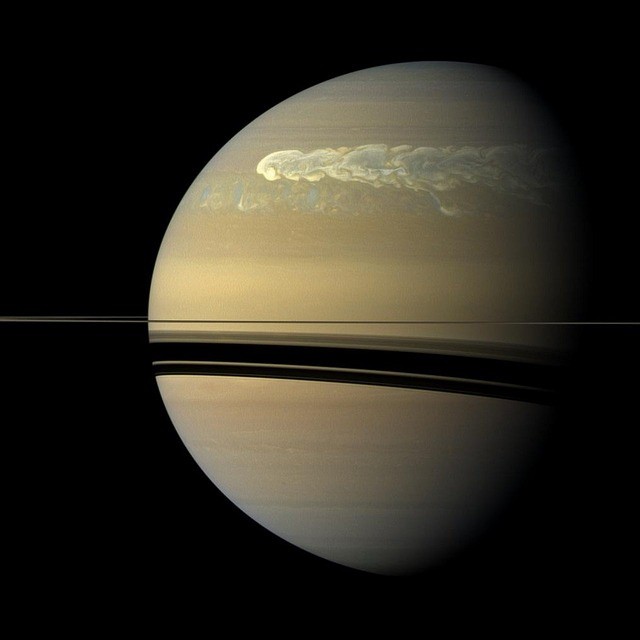A water plume with a width twice larger than the United States was detected from Enceladus, one of Saturn's Moon, according to the National Aeronautics and Space Administration (NASA).
This is not the first time that such a phenomenon has occurred.
However, the amount of water vapor flowing from Saturn's neighbor is only being observed now for the first time in modern history.
The discovery of the plume of water vapor from Enceladus is significant since it gives us an idea of how Saturn and its rings are supplemented with water.
In addition, the observations are of paramount importance since scientists have asserted for years that the presence of water in a space rock or planet beyond Earth increases the probability of the existence of life, even on a microscopic level.
Enceladus Water Plume Detected

The Enceladus water plume was detected by NASA's James Webb Space Telescope, which showed a 6,000-mile jet streaming from the Arizona-sized moon.
Data from the observation is now being examined by a team spearheaded by Geronimo Villanueva, a NASA planetary scientist at the Goddard Space Flight Center in Maryland, Newsweek reported on Wednesday, May 31.
The James Webb Telescope's image showed the massive plume coming out from the icy moon, a phenomenon that some people on social media are doubting and scrutinizing since it apparently defies the laws of physics.
In several YouTube comments under a video report by The Independent about the observation, one user brought up about Newtonian physics into the argument.
Meanwhile, another user compared the image to a CGI, as those seen in fancy Hollywood movies.
Extraterrestrial Life Possible
Following the discovery, the case of extraterrestrial life existing in Saturn's moon is being reinforced.
However, work still needs to be done as the observation of the water plume is yet to be considered nothing but a data that needs to be analyzed.
In such efforts, Villanueva's team and their study of James Webb's observations have been accepted for publication by the journal Nature Astronomy, where a pre-publication version is available at the website of NASA, as provided by Newsweek.
In relation to the observations, astronomers and planetary scientists have pondered in the past if whether Earth's Moon could host alien life.
Unlike Saturn's moon, our lunar neighbor is partially devoid of available, accessible water on its surface.
In 2020, NASA reported for the first time that there is water molecule in sunlit areas of our Moon.
What is Enceladus?
Enceladus is Saturn's sixth-largest moon with a diameter of 500 kilometers and it is "tidally locked" with the large planet, keeping the same lunar face towards it.
Water vapor from Saturn's moon was first observed by the Cassini spacecraft almost 20 years ago.
However, the space observation technology at that time was not yet advanced to accurately determine the true size of the water plume.
© 2025 NatureWorldNews.com All rights reserved. Do not reproduce without permission.





